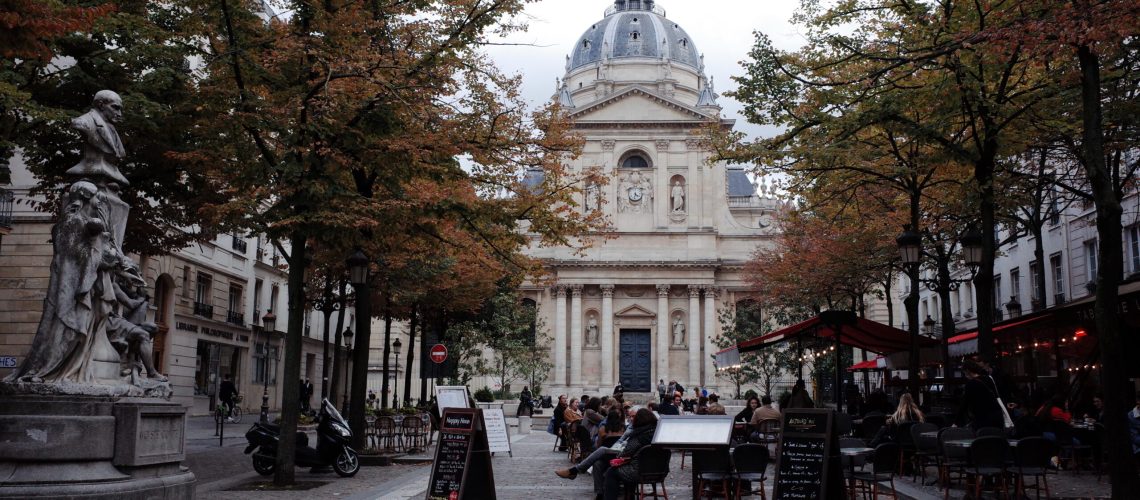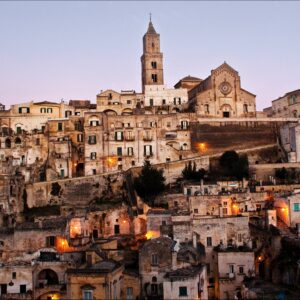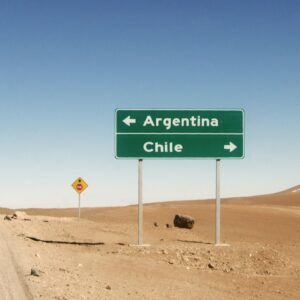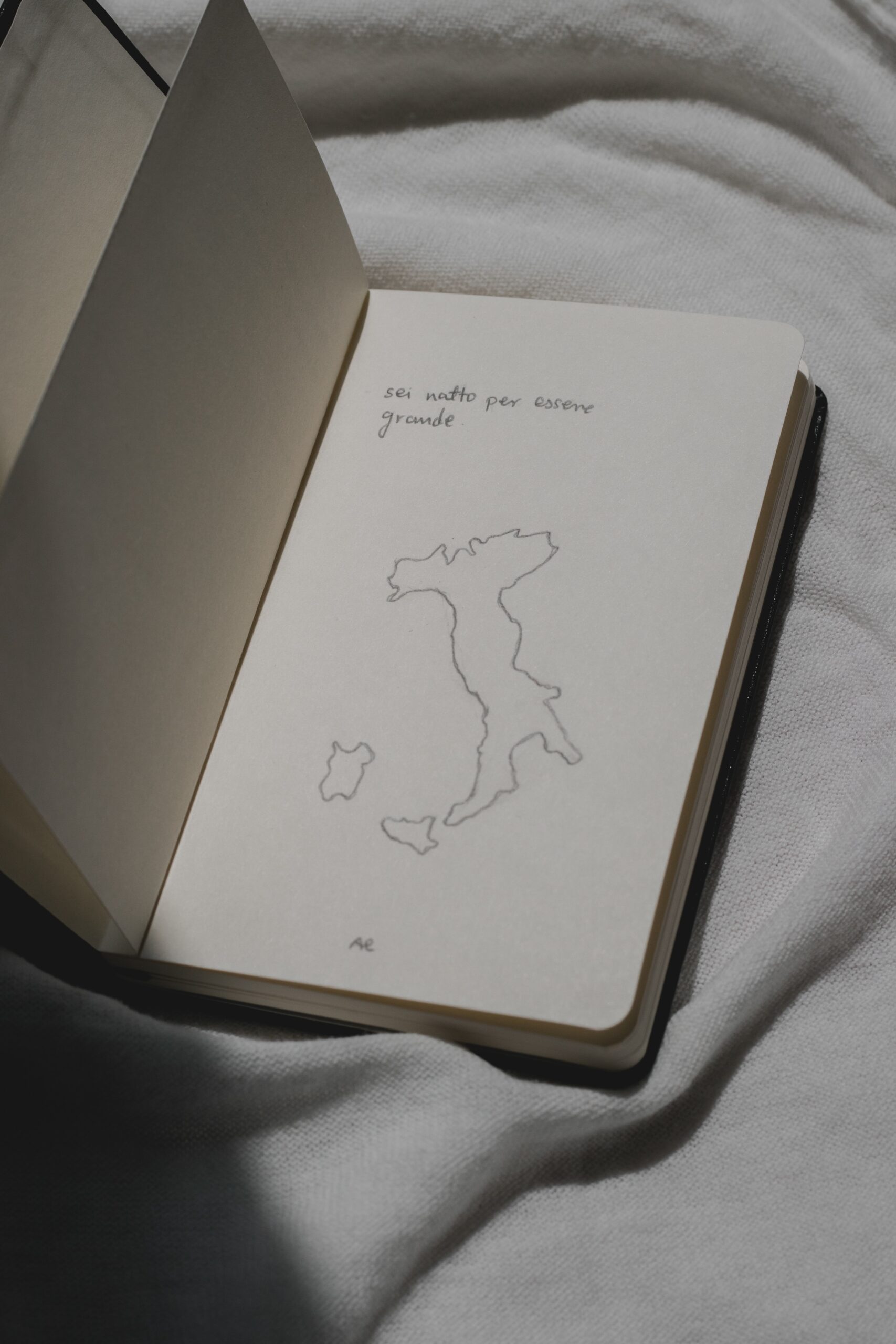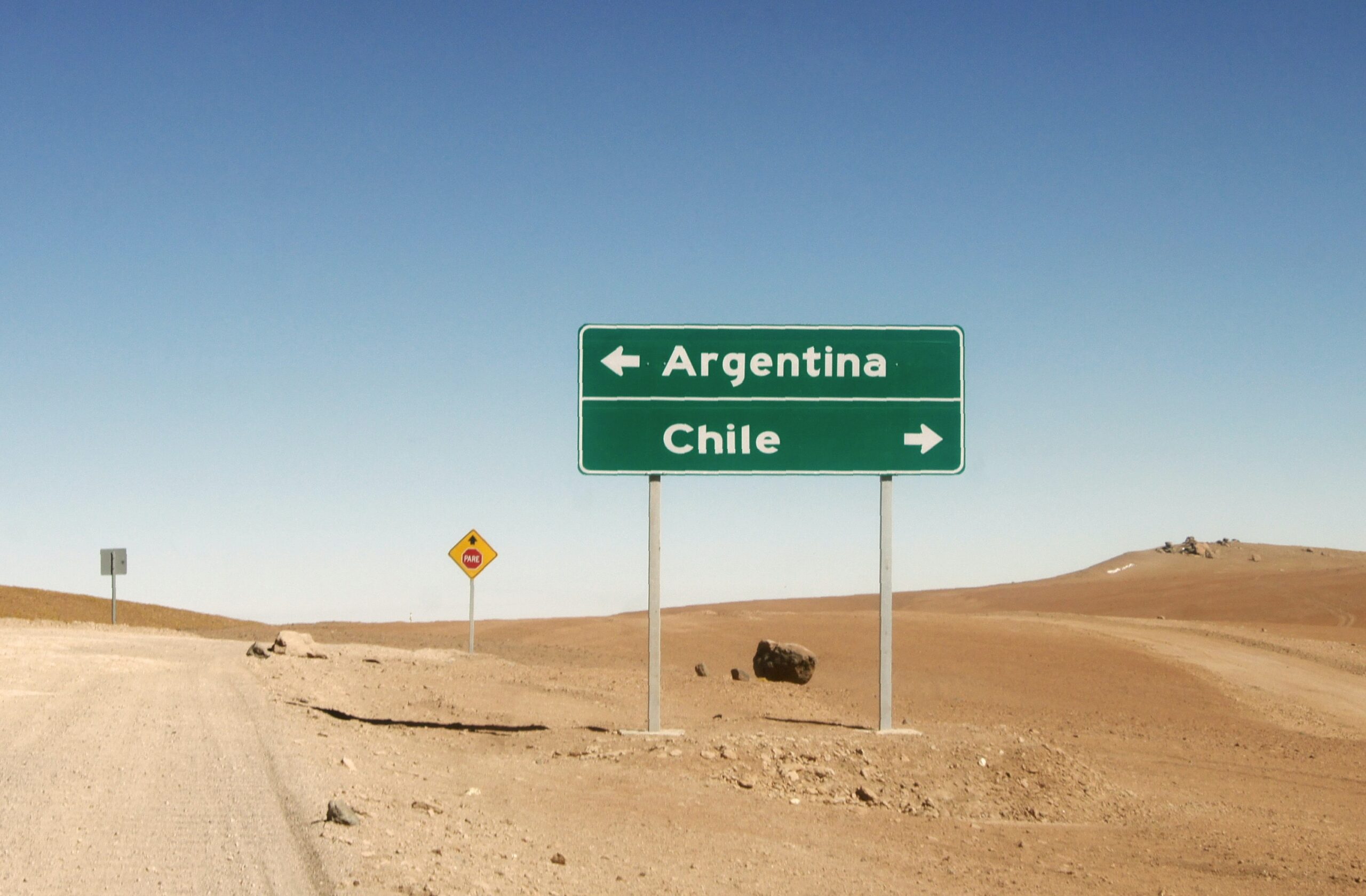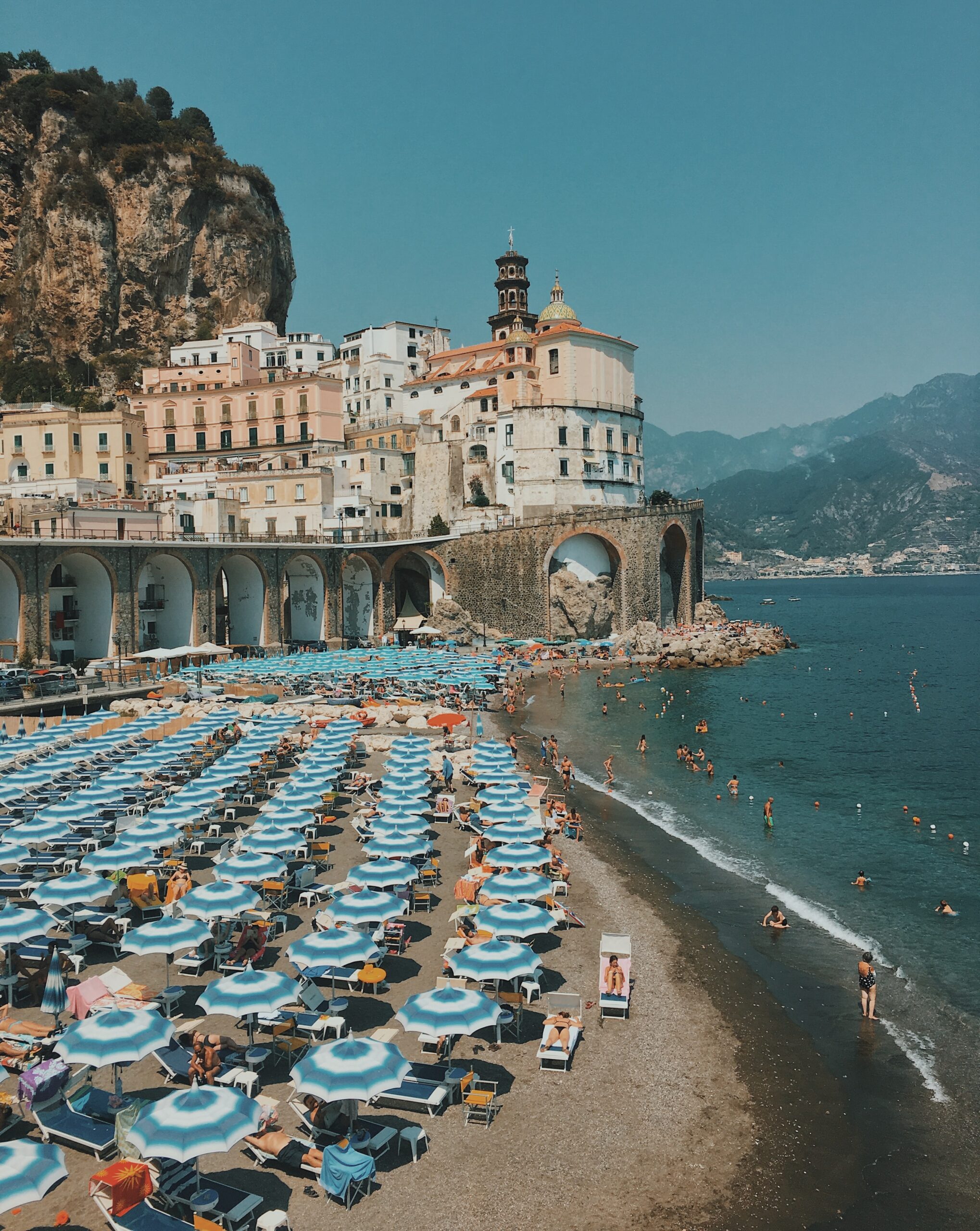Founded in 1150, the University of Paris is often described as the world’s second oldest university still in existence. And with age comes a certain prestige and reverence. For many non-French people, the Sorbonne belongs in a similar category as Oxford, Cambridge and Harvard.
But while I was a student, I certainly didn’t have that impression. For one thing, ‘the Sorbonne’ is not actually a university; instead, it refers to the building in the Latin Quarter with which the University of Paris is associated.
Secondly, the University of Paris is no longer a university — or at least not one in the traditional sense. Following the riots of May 1968, the University of Paris split up into thirteen universities, each one with a unique curriculum and philosophy. The one which I attended, Paris IV, focused primarily on languages and literature while also having access to the Sorbonne itself. A few years ago, ostensibly in a bid to jump up the global university rankings, Paris IV merged with the more science-focused Paris VI to form Sorbonne University.
Thirdly, it’s not even that prestigious — at least locally anyway. The reason is that universities in France just aren’t that prestigious. France’s tertiary education system is unusual in that students, upon graduating from high school, spend two years in classes préparatoires that prepare them to enter a grande école — a private institution specialising in a certain subject. As they’re selective, those who attend them tend to be the best and brightest who, upon graduation, have a wealth of options ahead of them in a country where who you know and where you studied counts for considerably more than in so many other countries.
So where does that leave the students who don’t go to a grande école? The universities, of course. In France, universities tend to be open to everyone, regardless of high school grades. You could say a university is regarded in a similar way to a community college in the United States or a polytechnic in New Zealand — a tier below the tertiary institution that commands the most academic respect. Aside from university students in law and medicine, university students, as someone recently told me, are seen as “losers” simply because they didn’t get into a grande école. And so when I was at the Sorbonne, everyone there didn’t think that highly of it. It was just a université, just like anything else.
But here’s the thing: people overseas don’t know any of this. For all they know, the Sorbonne is one of the most famous universities in the world — if they’ve heard of it at all, that is. And so if you were to tell someone that you were attending the Sorbonne, they might think you were a top student, even if nothing could be further from the truth. In other words, you could bask in the glory of a misperception that exists overseas but just not in France.
The Tour
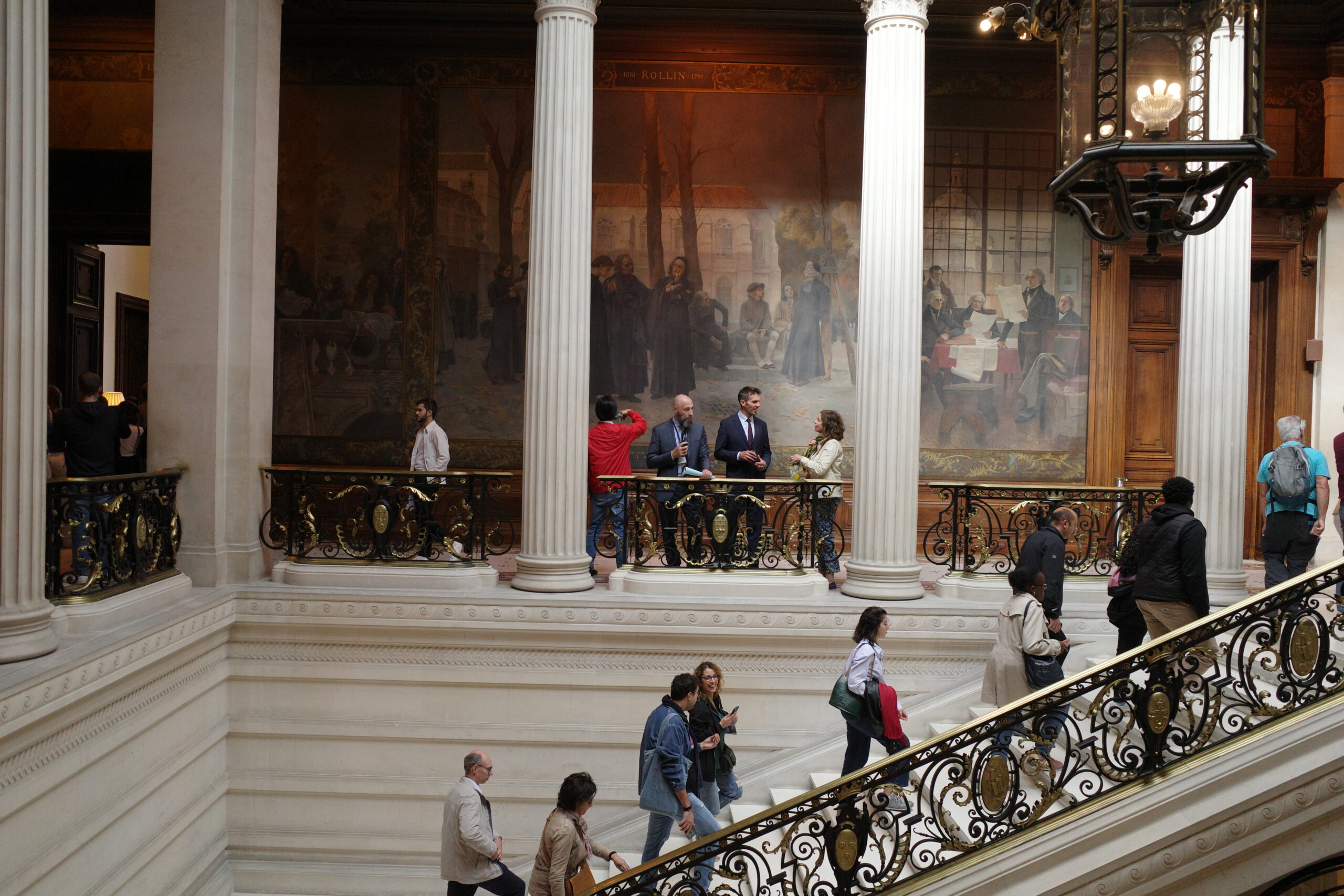
The last time I had visited the Sorbonne was in 2012. I was an exchange student at the Université Paris-Sorbonne (or Paris IV). And so when I found out that the Sorbonne was opening to the public during the Journées européennes du patrimoine or European Heritage Days, a continent-wide weekend event, I decided to see what I hadn’t seen since my student days.
As I soon discovered, the part of the Sorbonne that was open to the public was the main entrance — a part I of the building I had never seen before. As a student, I always entered the building from the Place de la Sorbonne, the square next to the Boulevard Saint-Michel. But this time, I could finally see the more administrative wing of the Sorbonne. As it turned out, this part of the building was much grander than anything I’d seen before. Marble staircases led up to an area whose walls were covered in paintings showcasing famous events from Paris’ past. One wall showed the construction of the Sorbonne in 1253 AD, around the time when Dante was writing The Divine Comedy and the Maori people discovered the islands in the South Pacific that would become New Zealand, while another wall depicted the philosophers Réné Descartes and Blaise Pascal having a discussion — possibly about human nature and the possibility of attaining divine grace via human reason.
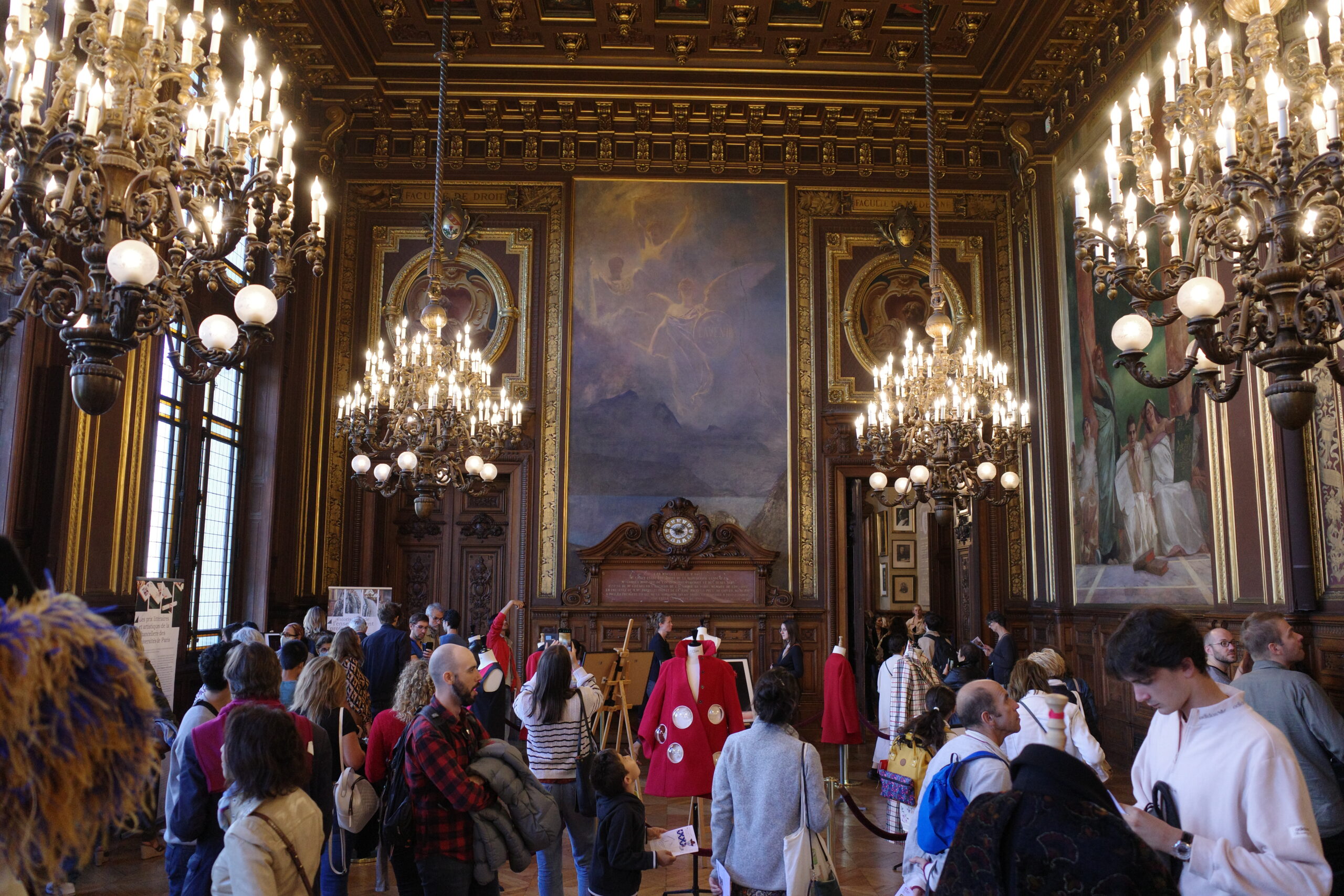
The paintings were next to lavish rooms gilded in gold paint and chandeliers were paintings representing the various faculties that made up the ancient Sorbonne. Further ahead, there was a room for judges to deliberate on matters.

I went down a flight of stairs and found myself made my way to the grand ampithéâtre. It was a sight to behold. Waves of green seats sat next to white statues of famous alumni including René Descartes and Blaise Pascal that towered above everyone who entered the room. Behind me, a 19th-century fresco called Le Bois Sacré by Puvis de Chavannes was holding everyone’s attention. As Bach’s Air on the G String was playing in the background, I had the impression of being in some kind of arthouse film about old Europe.
I remember someone once saying that they once had a lecture in the ampitheatre — and that it was impossible to concentrate. The room was so grand and beautiful, their eyes spent the whole time tracing the room, taking in every detail around them. Ironically, then, a lavish lecture hall might actually be counterproductive to studying, as you find yourself hostage to visual overload.
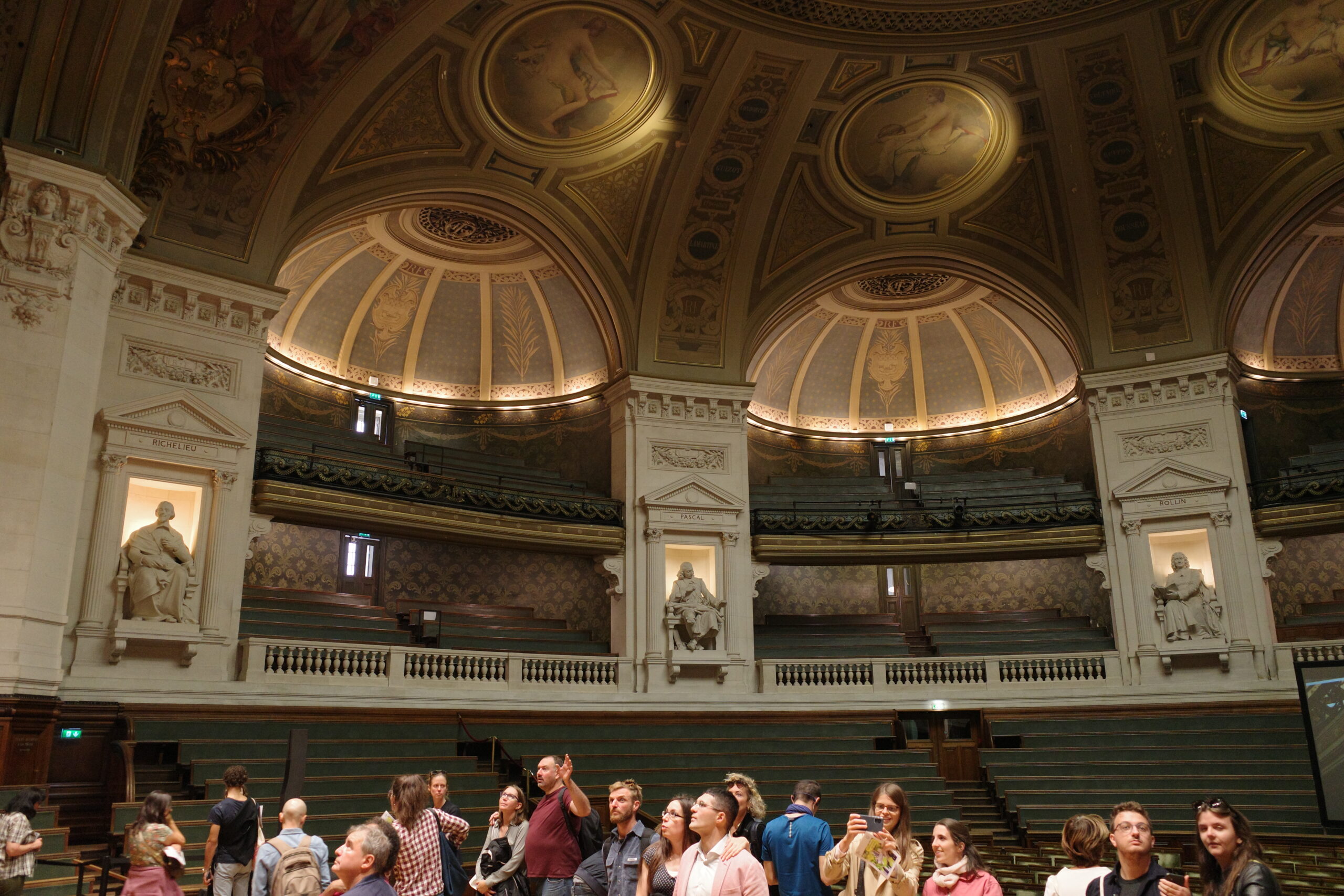
While I was on exchange, I never had a lecture in an amphitheatre like that one. While Paris IV indeed had some rooms in the Sorbonne, the vast majority of lectures took place in spartan YMCA-style buildings elsewhere. So much for classic charm and all. My Italian lectures were in a building in Malesherbes in the North-West of Paris, while my philosophy lectures in Clignancourt in the North of Paris. On one particular day of the week, it was literally impossible to get to my lectures on time. I would have a philosophy tutorial, then rush to catch the metro to Malesherbes…only to arrive thirty minutes late for my lecture. Of course, this was never a problem for local students, who only studied their major. But as I had what I had considered the bright idea of studying a variety of disciplines, I had to grapple with the fact that none of them took place in the same geographic location.
Part two coming soon…
